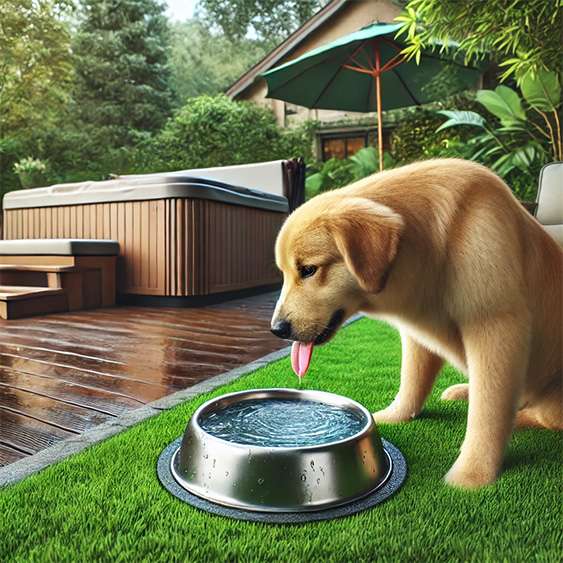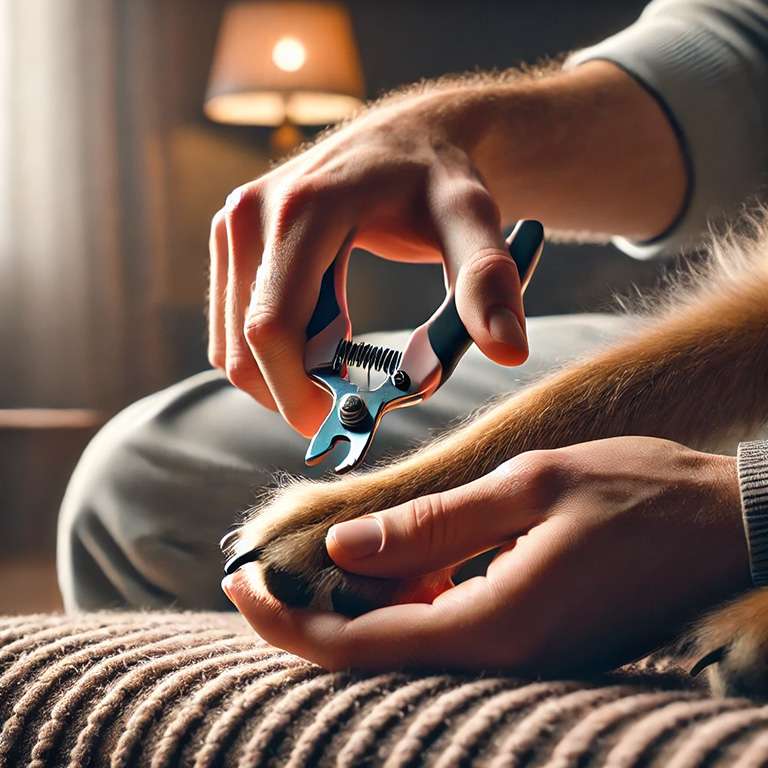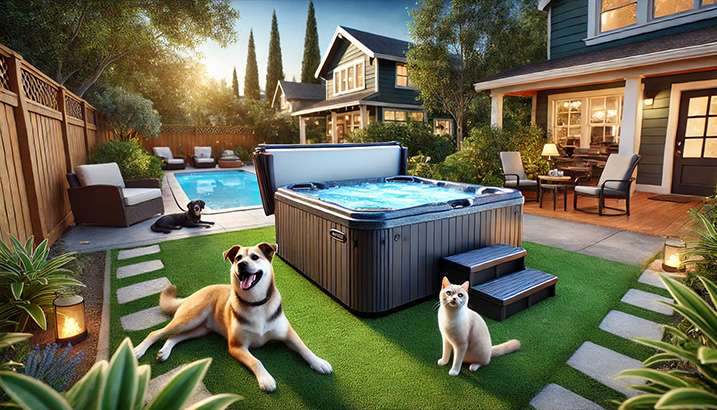Understanding the Risks
Before inviting your pet into the hot tub, it’s crucial to understand the potential risks involved:
1. Temperature Concerns

2. Chemical Exposure
3. Physical Safety
Best Practices for Pet Safety
1. Lower the Temperature
2. Limit Time
3. Rinse Before and After
4. Supervise at All Times
5. Provide a Way Out
Alternatives to Hot Tub Time
1. Shallow Pools
2. Sprinklers and Splash Pads

3. Pet-Specific Spas
Recognizing Signs of Distress
1. Excessive Panting
2. Skin Irritation
3. Disorientation
Is Using Salt Water in Your Hot Tub Safer for Pets?
Understanding Salt Water Systems
Benefits of Salt Water Systems
1. Lower Chlorine Levels
2. Softer Water
3. Less Odor
Potential Risks of Salt Water Systems
1. Salt Concentration
2. Chlorine Exposure
3. Temperature Concerns
Best Practices for Using Salt Water Hot Tubs with Pets
1. Lower the Temperature
2. Monitor Time in the Water
3. Rinse Thoroughly
4. Supervision.
5. Provide Fresh Water

Signs of Salt Water Overexposure in Pets
1. Skin Irritation
2. Upset Stomach
3. Lethargy or Disorientation
Effects on the Hot Tub: Clogged Filters, Spa Damage, and Bacteria-Ridden Water
1. Clogged Filters
2. Spa Damage
3. Bacteria-Ridden Water
Preventative Measures for Hot Tub Maintenance
1. Pre-Rinse Pets
2. Use a Pet-Safe Cover
3. Trim Nails
Keep your pet’s nails trimmed and smooth to reduce the risk of scratches and damage to the hot tub’s surface. Regular grooming helps protect your investment.

How to Animal-Proof Your Hot Tub
1. Install a Secure Cover
2. Use a Fence or Enclosure
3. Maintain a Clean Environment
4. Use Animal Deterrents
5. Install Barriers
6. Regular Inspection and Maintenance
7. Educate and Train Pets
8. Landscaping Considerations
Avoid planting trees or shrubs that attract animals near your hot tub. Instead, use plants known to repel animals, such as lavender or marigolds. Trim back any branches or vegetation animals might use to climb into the hot tub area.
Conclusion
Prioritizing Safety and Cleanliness
Using Salt Water Systems
Maintaining Hot Tub Integrity
Animal-Proofing Your Hot Tub
- Taking proactive steps such as installing a secure cover
- Using a fence or enclosure
- Maintaining a clean environment
- Using animal deterrents
- Regularly inspecting and maintaining your hot tub
Educating and training pets, as well as considering landscaping options, can further enhance the safety of your hot tub area.
Contact your local veterinarian or pet care expert for more information on pet safety, hot tubs, or pet-friendly water activities. Happy soaking, and stay safe!
If you have any questions or need further assistance, reach out to Love’s Hot Tubs. We’re dedicated to helping you with all your hot tub needs!
Additional Information and References
Whatspa? “Can a Dog Go In a Hot Tub? 2024 Safety Tips For Your Pup”
Country Living “Keep Your Dog Away From Hot Tubs This Summer, Warn Vets”
The Dog People “Can My Dog Go in the Hot Tub”
PetMD “Chlorine in Pools: Is it Safe for Pets?”
PetGuide “Chlorine or Saltwater Pools: Which is Best for Dogs?”
Healers Percare “Can Dogs Swim In a Saltwater Pool: What You Need to Know”

